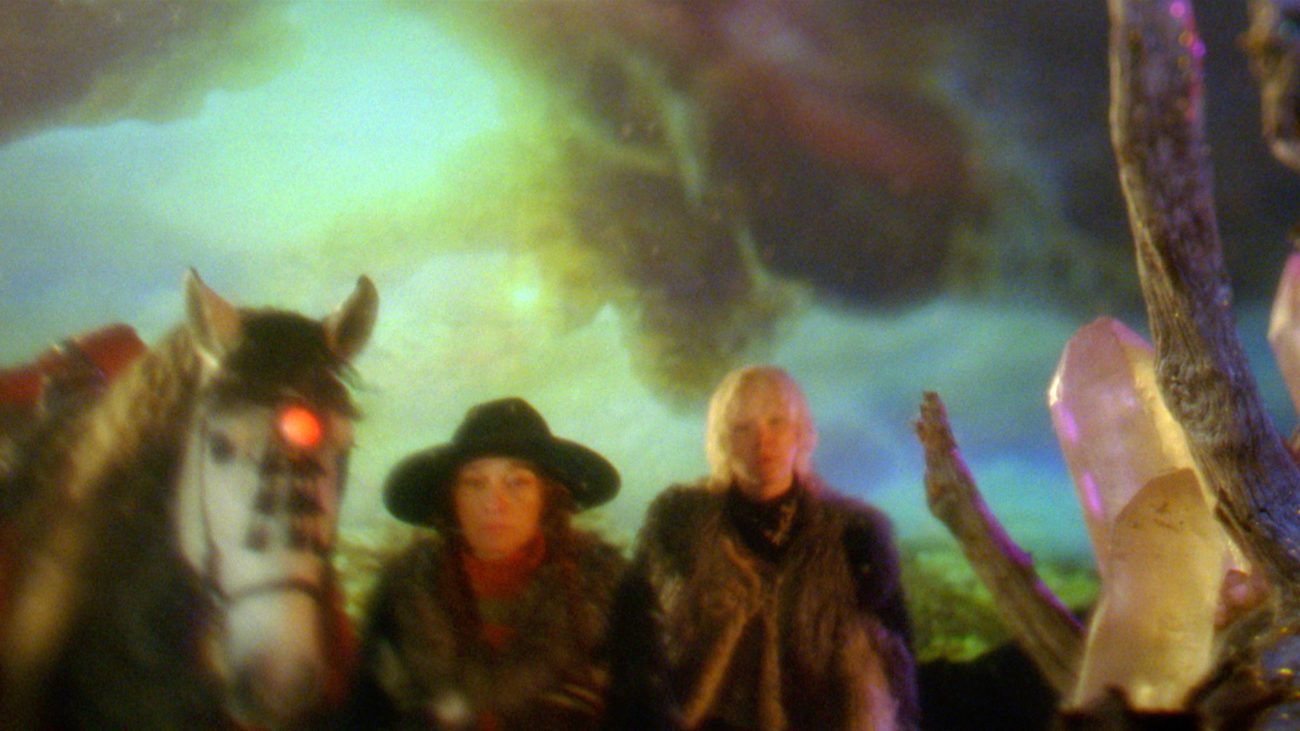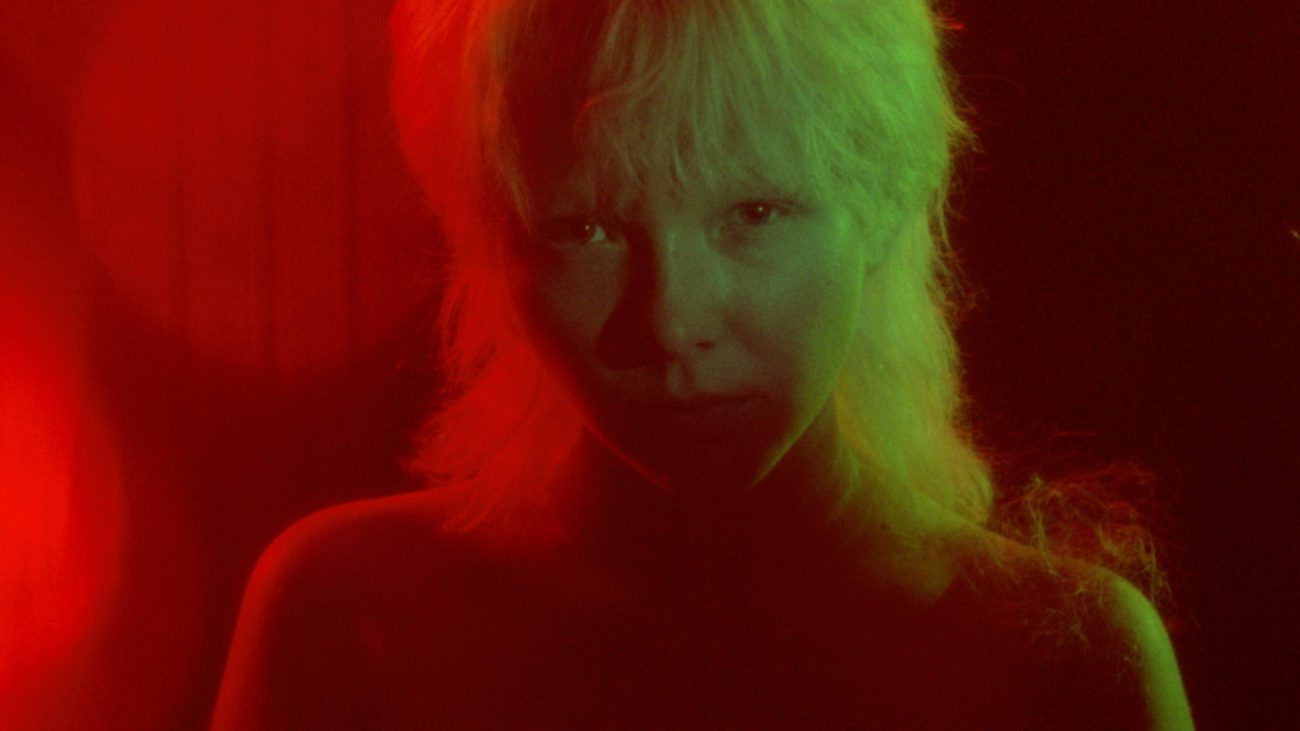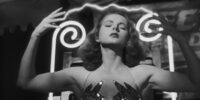Altered Innocence describes the new film by Bertrand Mandico, After Blue (Dirty Paradise), as “a lesbian El Topo in space!” To say so doesn’t miss the mark, as the release indeed channels Alejandro Jodorowsky’s famous acid-Western motifs but with a (nearly) all-female cast on a (nearly) all-female planet set in a future where men cannot survive. However, that brief description barely does this bizarre, otherworldly film justice. After Blue (Dirty Paradise) is a mind-blower of a head trip, something best experienced with either an open mind or an altered mood to get the most of its practical optical effects, elaborate set pieces, and confounding narrative.
After Blue opens with a conceit not uncommon to science fiction: humans have fled a long-uninhabitable Earth. It’s a vital trope precisely because there are no guarantees of our planet’s survival: physicist Stephen Hawking’s final warning was for humans to leave Earth within 200 years (and that was four years ago, so we have 196 left, if you are counting, to heed his caution). And it’s been used in sci-fi films from Titan AE and WALL*E to the more recent Colony and IO and last year’s Settlers and Don’t Look Up, among dozens of others, if to uneven effect. Even a Disneynature docudrama like Polar Bear makes clear the Earth is not infinitely sustainable.
Here, having fled an uninhabitable Earth, only women are able to survive on the murky, dripping planet named “After Blue.” Zora (Elina Löwensohn) is the hairdresser in charge of managing manes of fur women grow there; her teen daughter Roxy (Paula Luna), an outsider harassed by others, unintentionally releases a buried genie of sorts by the name of “Kate Bush” (Agata Buzek), a strange creature with an eyeball in her privates who promises Roxy three desires. She takes the liberty of murdering Roxy’s harassers, an act Roxy did not request, after which Kate Bush escapes and Roxy and Zora take pursuit, sporting a fashionable Paul Smith pistols, Gucci rifles, and plenty of smoldering stares.
“Kate Bush,” by the way, is invoked with great sincerity and the film trades on the singer’s lush, romantic, literary experimentalism. (And currently, a new generation of Millenials and Gen-Z are being acquainted with her following her music’s centrality to Season 4 of Stranger Things: “Running Up That Hill” suddenly shot to the top of the Apple Music chart in the U.S., nearly 40 years after its release.) In After Blue, Kate Bush is always referred to, only and often, by both first and last names. I do not recommend making this a drinking game if you wish to avoid death by alcohol poisoning. I doubt you would last past the film’s first act.

In their pursuit of the fugitive Kate Bush, Roxy and Zora meet Sternberg, a gunslinger whose sexual wiles Zora cannot resist, and several deformed creatures, including one man (I think!) with spectacularly tentacular genitalia and several women (I think!) with large, gaping, head-swallowing fishlike maws for heads which are, apparently, objects of lust. Filled with heavy-breathing, bosom-heaving lust, the characters’ long sojourn is interrupted by several sexual interludes, environmental threats, and crises of conscience before a final showdown that is more explained than it is shown.
To characterize the film’s plot, hyperbolic and strange as it is, barely does the film justice. After Blue evokes all of the senses. Visuals—all of them reliant on practical effects, makeup, and wardrobe—are astonishing and otherworldly, reminiscent less of any imaginable future and more of a modern-day Jodorowsky employing filters, props, and smoke machines in the service of a ’70s-style surrealism. The alien landscape reeks of toxic gases. Slime and goo everywhere coats characters in a gloppy, sludgy muck. And characters approach each other with mouths wide open, ready for bouts of kissing that never seem to fully satisfy their urges. After Blue may be as tactile a film as you have seen—or rather, felt. Aurally, the Foley effects together with Pierre Desprats’ lush score sustain the unearthly illusion of a damp, squidgy, cosmic landscape unlike any you have seen or heard.

If what I’ve described sounds like something of an acquired taste, rest assured: it is. There’s little narrative coherence to After Blue. Its raison d’être lay elsewhere, in creating a highly sexually charged, sonically lush, and weirdly retro-futuristic vision. But not in storytelling, where basic conventions of traditional narrative are largely eschewed in favor of creative visuals and surprising events. Mandico is not interested in providing what viewers might expect or want but in his own vision. Co-author/founder with Katrin Olafsdottir of “The Incoherence Manifesto,” Mandico claims that “To be incoherent means to have faith in cinema” and advocates for “unformatted, free, disturbed and dreamlike, cinegenic, an epic narration.” After Blue does not strictly adhere to each of the Incoherence Manifesto’s enumerated dicta, but it’s clear that Mandico’s vision is far more memorable than the details of the plot.
Even so, the film’s tale of teen Roxy’s coming of age is one that grounds its narrative in a recognizable arc. Bullied by her peers, ostracized from her community, and uncertain about her future, Roxy is thrust into a quest she didn’t seek but doesn’t shy from. Reserved and cautious, Roxy makes for an apt point-of-view character, her predominantly passive gaze and sexual curiosity as she explores a world she barely knows constitutes the film’s admittedly slight narrative backbone.

Perhaps After Blue is one of those “those-who-like-this-sort-of-thing-will-find-this-the-sort-of-thing-they-like” films. Mandico’s vision is nothing if not specific, a ’70s-esque retro-futuristic lesbian folklore-fable rewriting conventions of sci-fi and Western genre tropes, all done with old-fashioned 35mm film and optical effects, in the service of a narrative that matters far less than the lush, drippy, sensual, sexual imagery with which it’s conveyed. Viewers whose priorities are narrative coherence, character motivation, cinematic realism, or hero’s-journey arcs will surely find themselves wondering how they landed on After Blue.
And those who like this sort of thing may find themselves for days, weeks, or even months after dreaming and wondering about the intense, haunting, curious images of the film they’ve seen. Whatever its narrative shortcomings, After Blue (Dirty Paradise) offers up a unique visual, aural, tactile, sensual—and memorable—cinematic experience.
After Blue (Dirty Paradise) opens at select Alamo Drafthouse cinemas across the country June 3, followed by theatrical releases in arthouse cinemas through June and July. For a full schedule of release dates, go to Altered Innocence.



